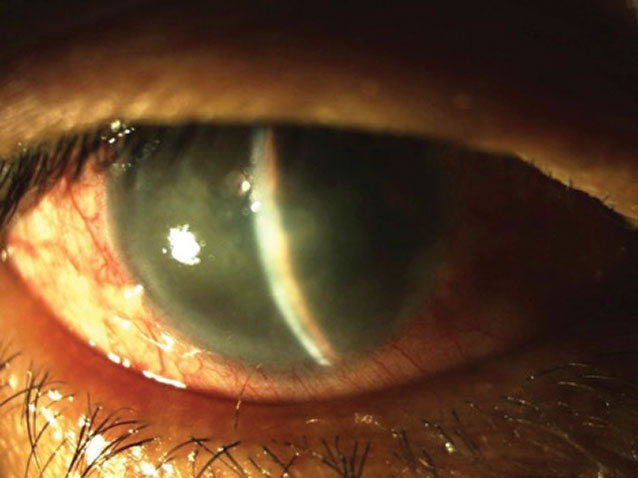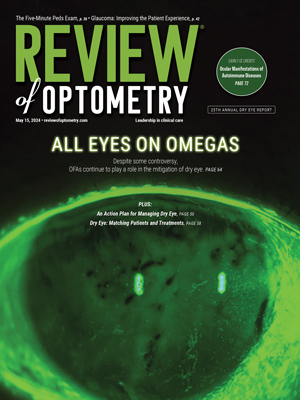 |
| Understanding the mechanisms, risks and management of drug-induced angle-closure glaucoma is vital for patient safety. Photo: Joseph W. Sowka, OD. Click image to enlarge. |
Many medical treatments can induce angle-closure in susceptible patients, mainly through pupil dilation or anterior displacement of the lens-iris diaphragm. Medications used for weight loss, epilepsy and over-the-counter cold treatments, among others, are known to induce angle-closure glaucoma. As angle-closure constitutes an ophthalmic emergency with the potential for blindness, it is key to recognize medications associated with this condition. Researchers at the Rutgers New Jersey Medical School in Newark, NJ, used a pharmacovigilance database to identify and quantify the significance of drug-induced angle-closure glaucoma at a national level. Their retrospective analysis, published last Friday in Ophthalmology Glaucoma, identified positive safety signals for both well-known drugs such as topiramate, escitalopram and tiotropium, as well as lesser-known drugs such as olanzapine, phentermine and ranibizumab.
The study used data from the FDA Adverse Event Reporting System and identified a total of 1,629 adverse event reports linked to 611 suspected drugs over the course of 20 years. To determine if these reports yielded statistically significant signals, the researchers used the proportional reporting ratio, reporting odds ratio, empirical Bayes geometric mean and information component as part of a disproportionality analysis. A signal was detected when all four disproportionality analysis metrics were positive. The cohort of angle-closure glaucoma cases demonstrated that the most common age group was patients between the ages of 40 and 65. The cohort included more women (66.1%) than men. On average, patients were exposed to 3.09 medications prior to the adverse event (a total of 5,035 drug entries were associated with the 1,629 cases).
Frequently reported drugs included topiramate (520 reports) and citalopram (69 reports), amongst many others. The study found that several medications yielded a positive signal, including ones with lesser-known associations like olanzapine, phentermine and ranibizumab. It did not observe notable reports for metoclopramide or lactulose. Tropicamide exhibited the most robust statistical significance, while acetazolamide was the second strongest.
The most frequently reported drug category was sulfonamides (642 reports), though the majority of reports in this category came from topiramate. Serotonergic agents were the second-most commonly reported class of drugs, with 318 reports.
“Sympathomimetic agents, anticholinergic agents and serotonergic agents can induce pupillary dilation and block leading to acute angle closure by inducing constriction of the iris dilator muscles,” the researchers wrote in their paper. “This may induce acute angle closure in patients by thickening the base of the iris, resulting in iridotrabecular adhesions, or by bringing the lens in close proximity to the iris in mid-dilation.”
The researchers highlighted that olanzapine exerted its effects through a combination of dopamine, serotonin, histamine and adrenergic antagonism, accompanied by a mild anticholinergic impact. They believed that it may be fruitful to further explore medications exhibiting mild anticholinergic effects and evaluate whether these pharmacological agents have the potential to trigger or worsen angle-closure glaucoma.
“It is crucial to recognize preventable causes like medications that have the potential to induce angle closure,” the team wrote. “As these therapy options play a pivotal role in various therapeutic interventions, understanding the mechanisms, risks and management of drug-induced angle-closure glaucoma is vital for patient safety.”
Aftab OM, Khan H, Khouri AS. Blind spots in therapy: unveiling drug-induced angle-closure glaucoma through a national analysis. Ophthalmol Glaucoma. April 26, 2024. [Epub ahead of print]. |

